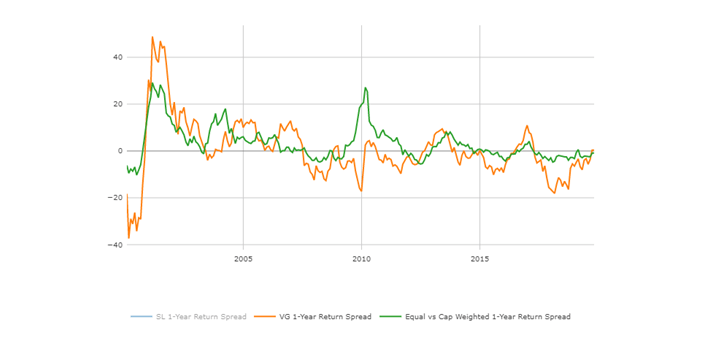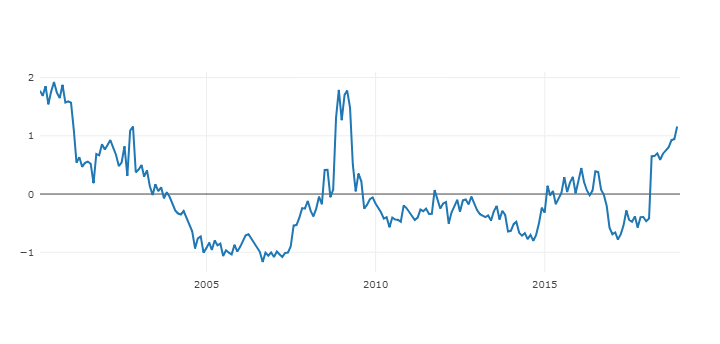Market Overview
We believe fundamentals drive long-term returns. Heading into 2020, there were some worries about the pace of global growth, but no one expected the outbreak of coronavirus. We think the virus will play out like past pandemics and natural disasters. It’s most likely a short-term problem that will slow economic growth, but within a few months will be a memory and that growth will recover. Stay positive and keep long-term prospective!
US Economics, Trade Truce and The Coronavirus
The trade war between China and the United States lost some energy with the signing of a limited understanding between the two countries. The deal included provisions to deal with intellectual property theft and boost buying of U.S. goods by China. A more definitive arrangement still must be agreed on, and that could take many months of negotiations. Unfortunately, that good news has been offset by the arrival of the deadly coronavirus. It since has spread to multiple countries and regions. While possibly eliminating growth in China in the first quarter, with severe ramifications for bordering nations, the virus will eventually impact the U.S. growth — the only question is by how much. That impact cannot be quantified yet.
The U.S. economy was very stable last year, gaining between 2.0% and 2.1% in the final three quarters. The beginning of 2020 has been choppy. On one hand we see pressures on the leading economic indicators, manufacturing activity, and employment. However, manufacturing has firmed up; housing saw signs of revival in building permits in January; the leading indicators have rebounded; and job growth has quickened, with the addition of 225,000 positions last month. Wage growth has been accelerating as well. One factor likely limiting the economy’s rebound in the first half of this year is the ongoing suspension of output on Boeing’s 737 Max 8 aircraft. All in all, we should see GDP growth around 2% in the current quarter, hopefully playing some catch up later in the year. Signet’s proprietary macroeconomic forecast, which considers a variety of economic and market indicators, doesn’t point to a recession in the following 12 months.
Global Economics
Per JP Morgan’s forecast, the economic impact of the coronavirus rests on three judgments. While the immediate impact of a large China demand and supply shock will be substantial, they expect global GDP to slow to about 1% growth on an annual basis this quarter, with manufacturing output contracting to about a 1.5%. Also, they do not expect the large disruptive impact of the shock to persist, assuming the virus impact will fade next quarter. One would expect China’s policy limit spillovers to its credit and labor markets. If developments align with this view, there is a high chance of a strong recovery in global growth around midyear. China’s growth should rebound as firms move to reverse earlier output shortfalls.
Stock Market and Corporate Profits
On a bright side, corporate profits remained healthy in the recent quarter. Per Value Line, data issued for the final quarter of 2019 showed that about 70% of the companies in the S&P 500 posted results that surpassed expectations. Nearly as high a percentage did so with respect to revenues. Signet’s actively managed equity portfolios saw the positive earnings rate north of 80%. Cost containment, business friendly tax policies, and solid volume growth all contributed to the outperformance, which should continue in the coming months, assuming the economy responds well as the year moves along. Strong earnings, a better economy, benign inflation, and near-record low interest rates are a tough combination to beat.
Stock Market Leadership and Investment Regime Changes
Free cash flow margins have been the best-performing quantitative factor in the U.S. large-cap market over the last decade. According to Empirical Research Partners, one reason for that is the threshold for what constitutes high margin kept increasing while nominal economic growth has been subdued. Investors started paying closer attention to the level of the margin five years ago when doubts about stronger economic growth re-appeared. In the last five years the stability of fundamentals has been a better differentiator as investors are concerned about keeping a good thing going. That’s been most true in the technology and industrial capital goods sectors, where the business cycle always looms. The efficacy in health care has declined as the pricing power of biopharma was called into question. The majority of the expansion in free cash flow margins has come from declining capital intensity as intellectual capital took precedence over that of the bricks and mortar variety. We agree with these observations and expect that the big free cash flow generators will continue to dominate for the time being. Valuation Spreads are sitting at 1.5 standard deviations high (a high level of distress in the market) and Large Cap Value is outperforming Small Cap Value by more than 10% YTD (see charts below). Should there be a disruption impacting IT corporate spending, “a house of cards” scenario is very plausible with a strong correction in Large Cap Growth (mostly represented by Technology) with Value and possibly Small Cap gaining the rein.
Valuation Spreads (Source – Signet FM):
Large Growth vs. Small Value 2020 YTD (as of 02/24/2020)
Source – Signet FM:



























































































